The last in-person guest I hosted before the onset of the Covid lockdown, an American whose trip to Italy had been upended by the outbreak and wound up in Toronto with his teenaged son, asked me to show them some great “Public Art.” In the moment, I was a little hesitant. The most iconic sculptures I could think of were scattered across the city, with no unifying thread to connect them.
But this spontaneous request opened my eyes to the depth and breadth of our city’s extensive public art collection, and led me to see what I could not adequately articulate at that moment: that Toronto is a veritable museum, containing more than 1500 catalogued works of sculpture, painting, street art, landscape architecture, photography and multimedia that are available for residents and visitors to enjoy, completely free, all the time.
It wasn’t until the now-iconic Henry Moore sculpture, “The Archer,” was installed in Nathan Phillips Square in 1965 that Toronto came to recognize the impact that art could have on beautifying the urban fabric and on the public imagination.

“The Archer,” Henry Moore, 1965
Up until that time, public art consisted primarily of statues of historical figures and monuments commemorating various events. The subjects of these early works reflected Toronto’s early European-, Caucasian-, and male-centric historical narrative. “The Archer” was the first abstract work of art to be placed in a public setting, and it has been transformative in shaping the culture and conversation about public art.
Toronto’s Official Plan has long encouraged the acquisition of art for the public realm. The Toronto Public Art Commission was established in 1985 to oversee the city’s commitment to public art.
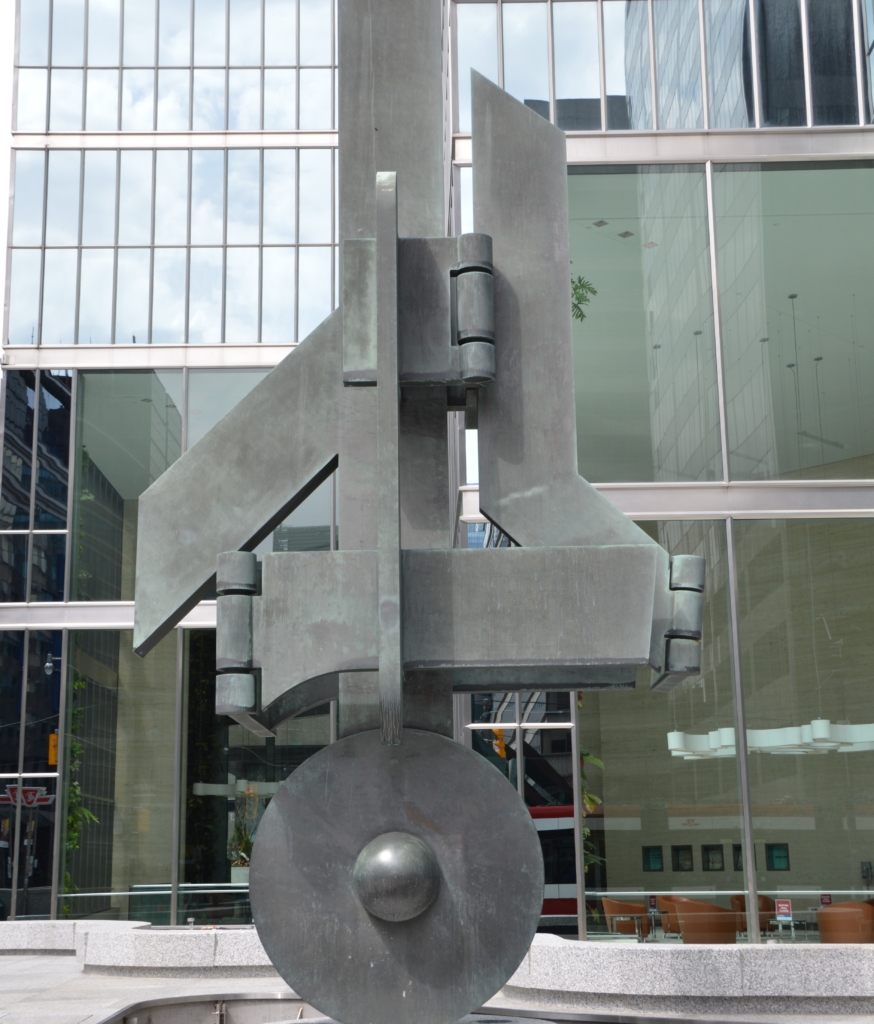
“Sun Life” by Sorel Etrog, from the City’s Public Art and Monuments Collection
Today both the Commission and its role have expanded to preserve and maintain works currently in the city’s Public Art and Monuments Collection (approximately 400 works installed in public parks, buildings and infrastructure); expand accessibility and impact of the stories that art conveys; and initiate new commissions and provide new opportunities for exhibits.
In 2007 City Planning established the “Percent for Public Art Guidelines.” Today, these guidelines stipulate that 1% of the gross costs of new construction projects should be allocated for investment in public art. To date over 300 projects have been commissioned. With more new construction in Toronto than anywhere else in North America, this collection is constantly expanding.
-
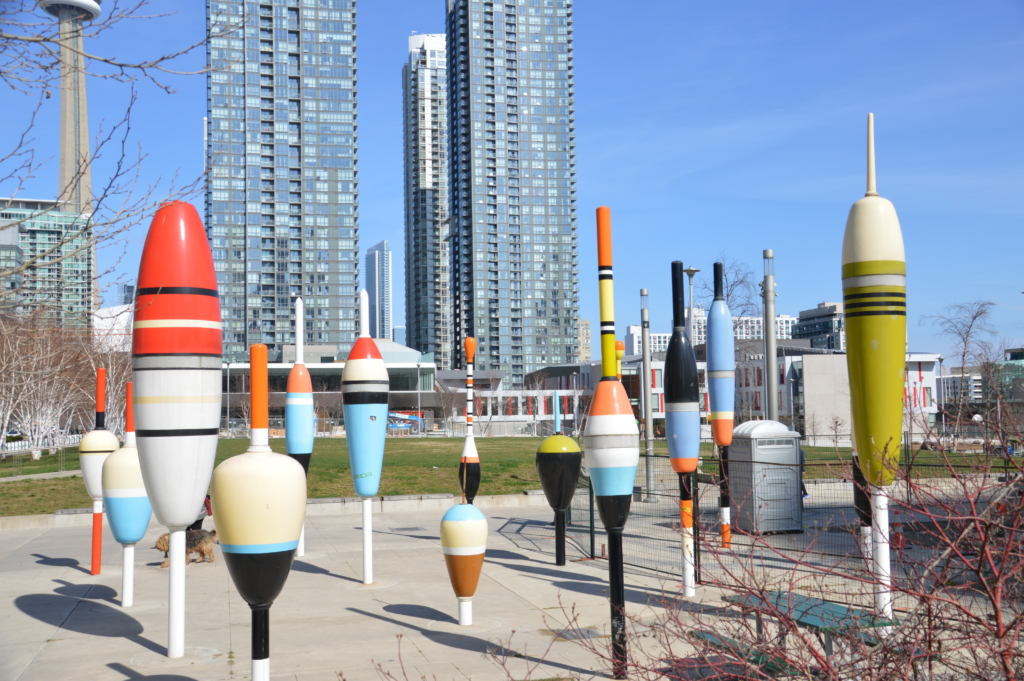
“”Fishing Bobbers” by Douglas Coupland, Canoe Landing Park -

“Superior” by Douglas Coupland, at the Delta Hotel -
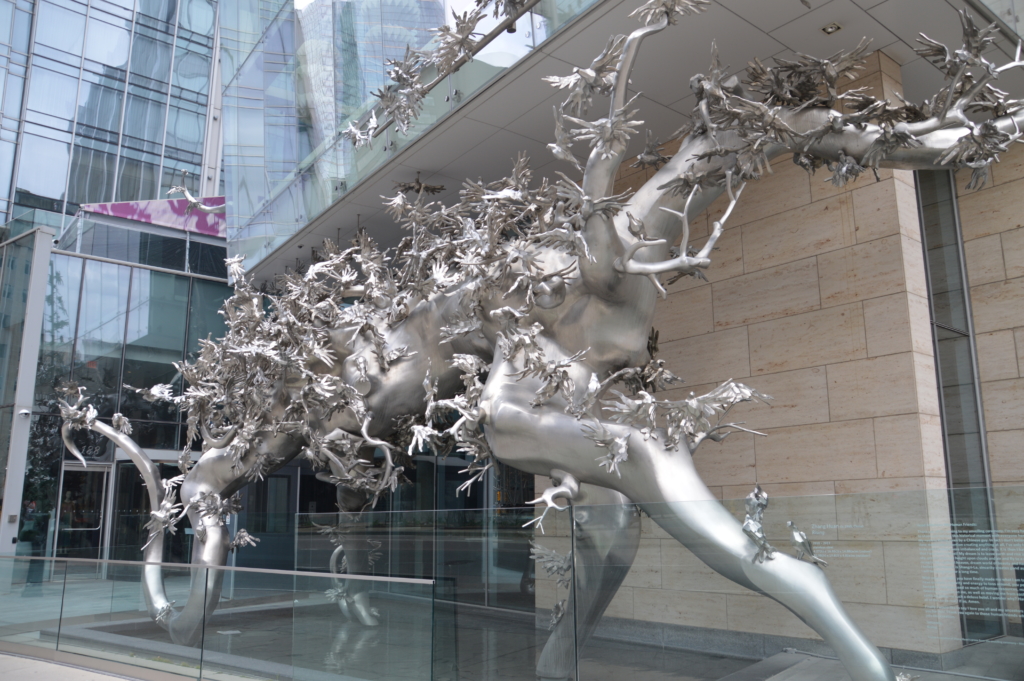
“Rising” by Zhang Huan at the Shangri-La Hotel -
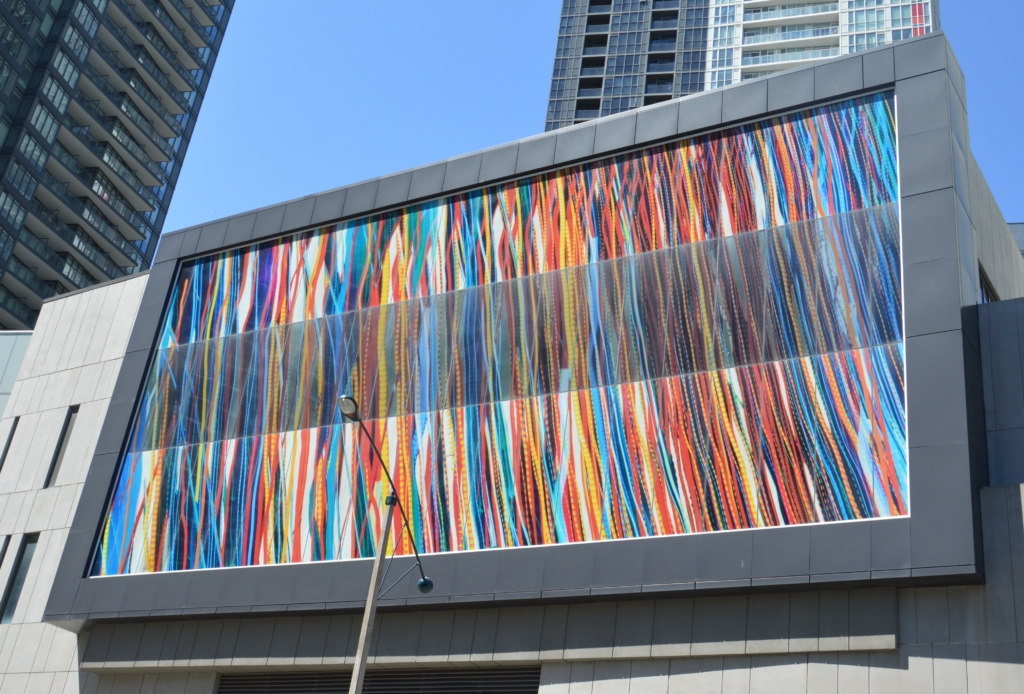
“Gardiner Streams” by Katharine Harvey, facing the Gardiner Expressway -
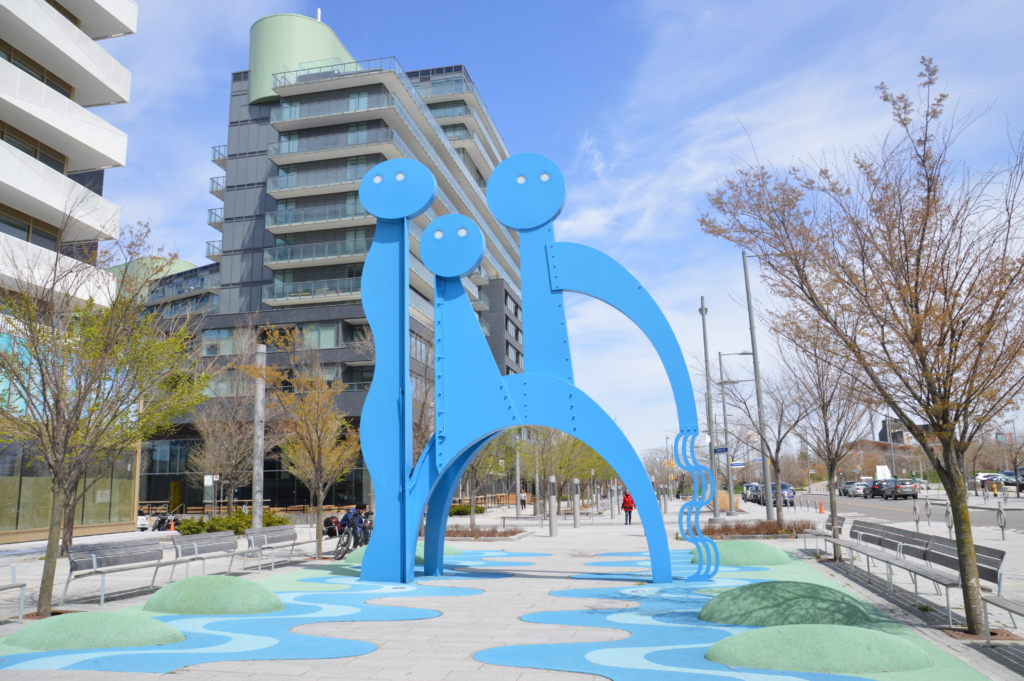
“The Water Guardians” in the Canary District -
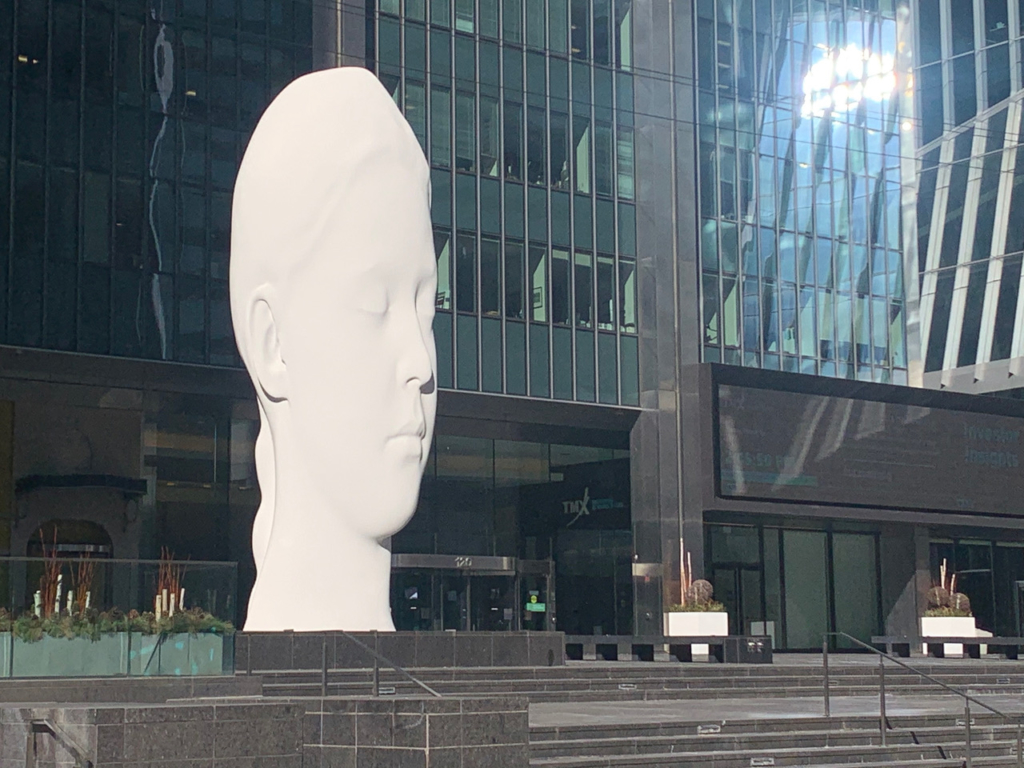
“Dreaming” by Juame Plensa, in the Financial District
Toronto’s third area of public art is Street Art Toronto (abbreviated StART). Pre-2000, graffiti was often painted on the sides of buildings, bridges, construction sites and other locations and was seen as a form of vandalism. But by the early 2000s, graffiti — or Street Art — as it came to be called, had morphed into a legitimate art form, with street artists exhibiting in some major New York City museums.
The painting of graffiti along Rush Lane (the alley behind Queen Street West) was initially regarded as vandalism, but after it was declared to be a civic improvement by the Queen West BIA and popularized by CBC host Rick Mercer, ultimately transformed the alleyway into one of the city’s most popular tourist destinations.
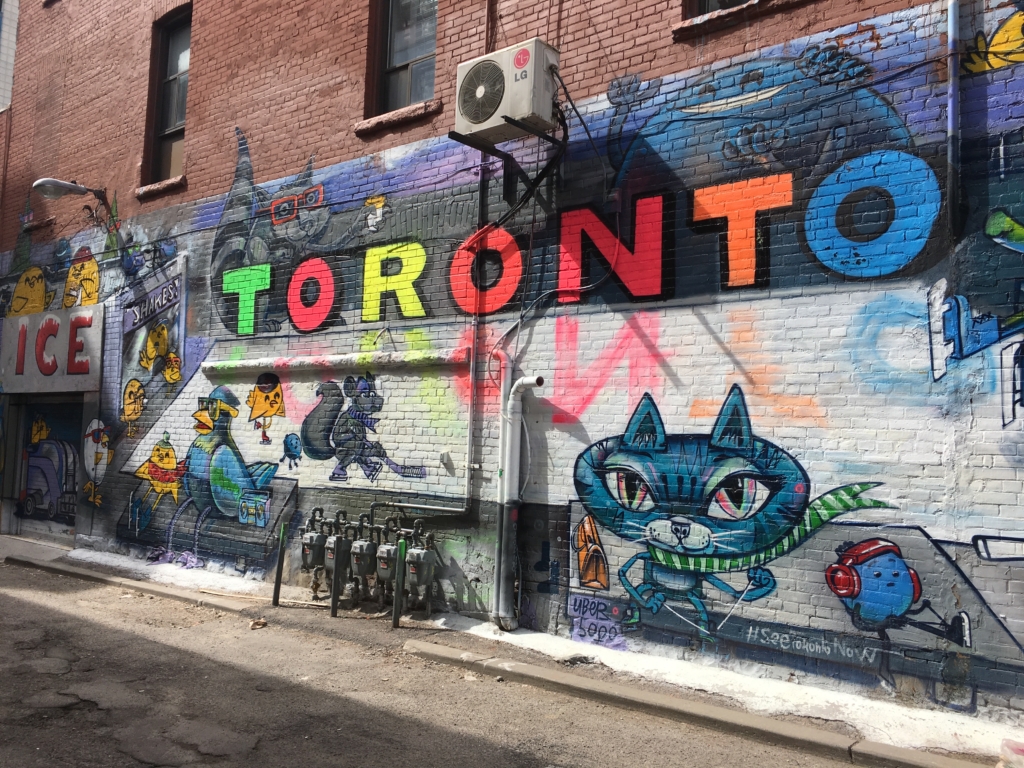
GRAFFITI ALLEY
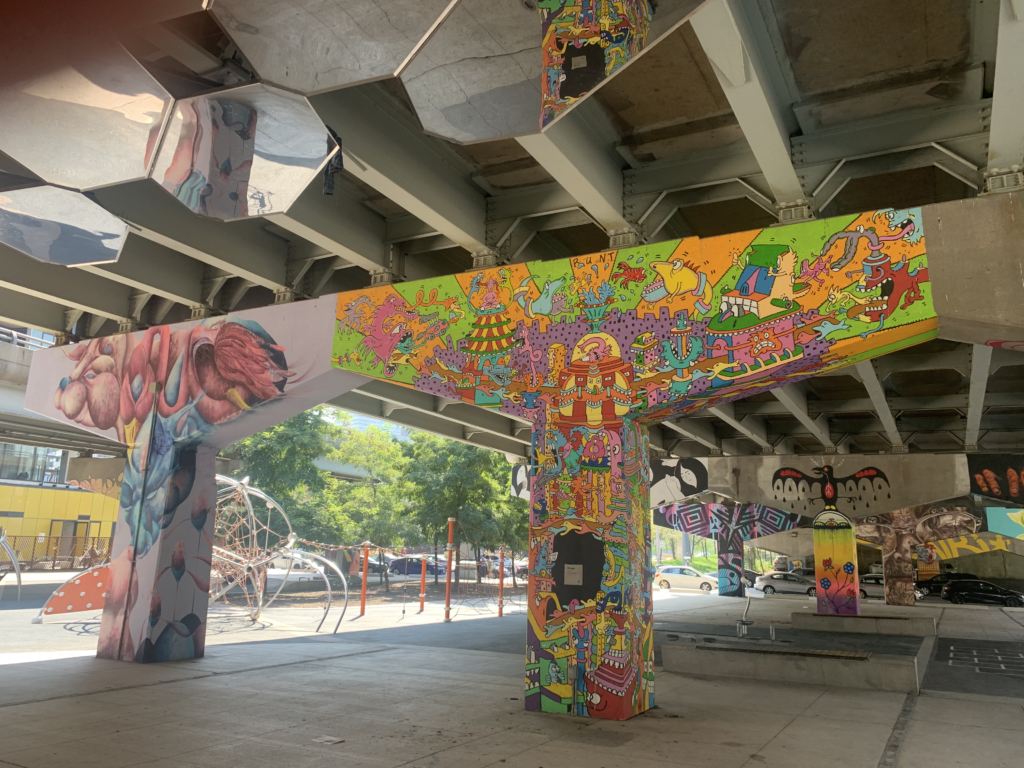
“Multiplicity,” this colourful mural in Underpass Park, an imaginative public space initiated by Waterfront Toronto, features works by 15 different street artists
Toronto’s Graffiti Management Plan (2011) was formulated to deter vandalism, support local and emerging street artists and provide designated installation sites. Street art works can range from painting on traffic signal control cabinets to 20-storey murals on the sides of buildings. The city supports Street Art because it reflects the incredible diversity of Toronto, provides a forum for creative expression within our communities, and enlivens urban walking and cycling routes. There are more than 1000 murals and other vibrant installations compiled in the city’s online StART database.
-
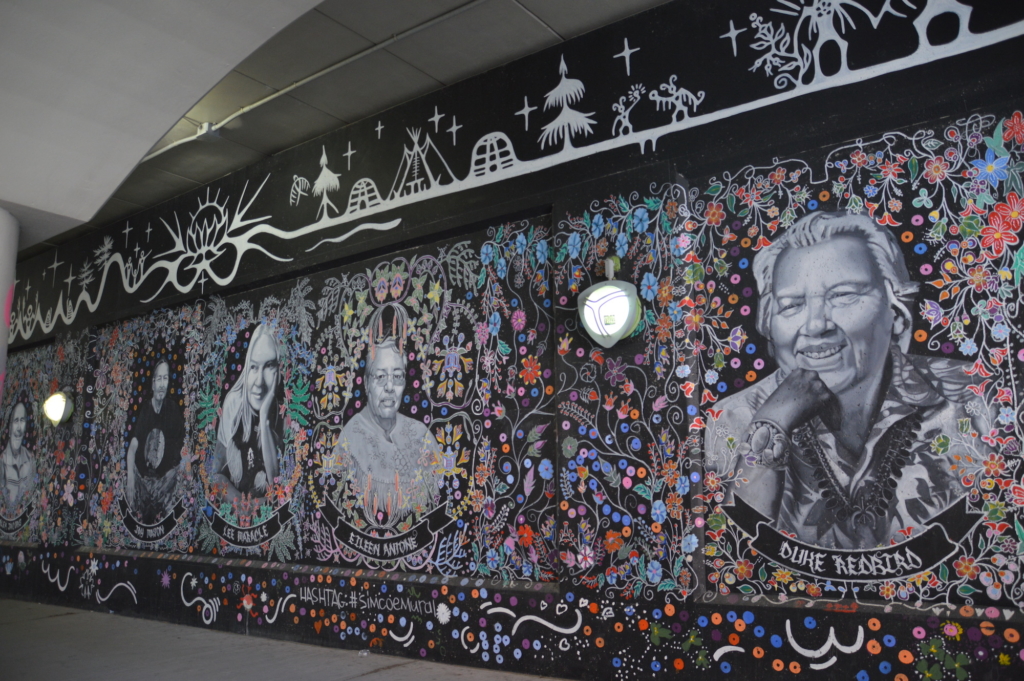
“The Elder Wall” by Tannis Nielsen, in the Simcoe Underpass, features portraits of 28 local Indigenous teachers/elders -
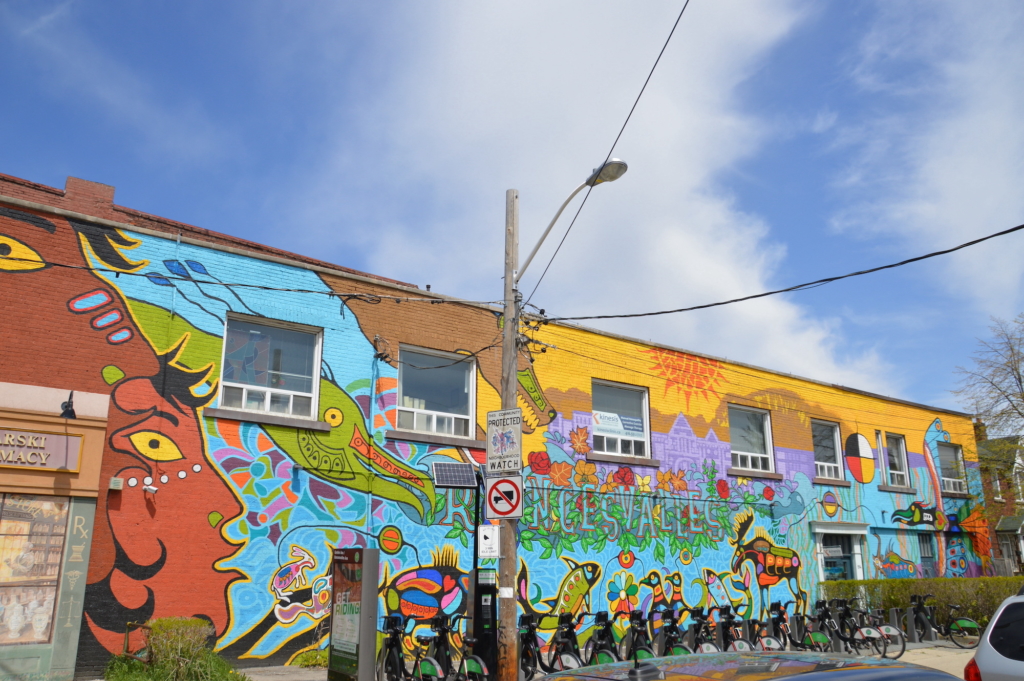
“The First Peoples Leading to the Eighth Fire,” by Philip Cote and Jim Bravo, produced in association with Street Art Toronto -
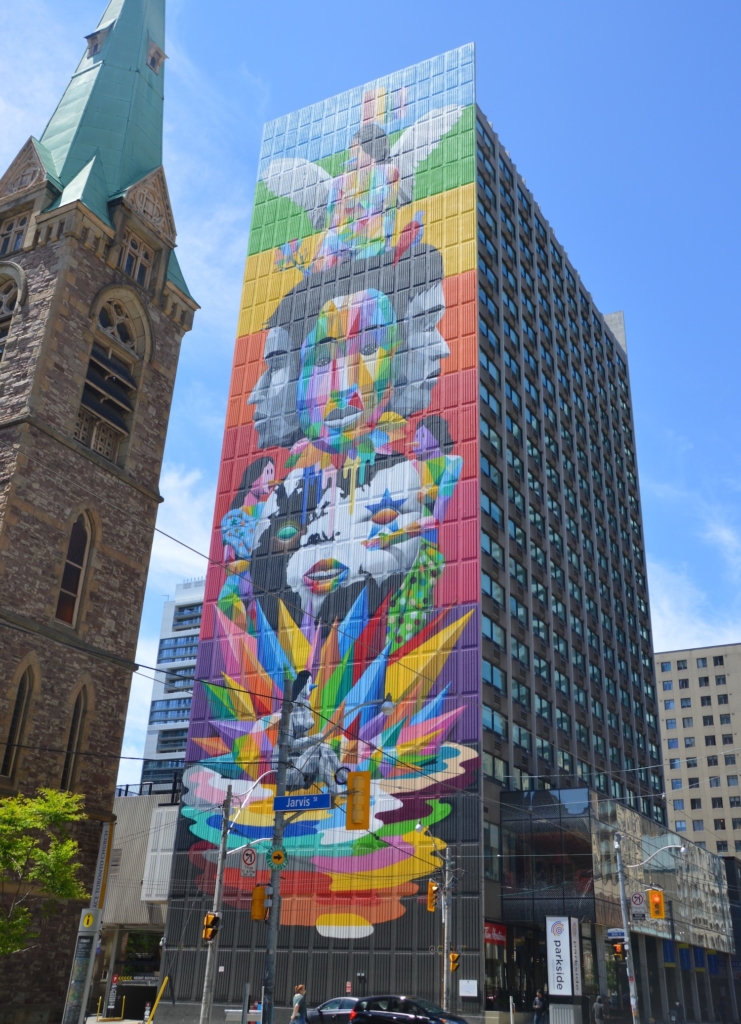
The 23-storey “Equilibrium” mural by the Spanish street artist Okuda San Miguel, produced in collaboration with STEPS
Finally, the recently-launched ArtworxTO commences a ten-year city initiative to strengthen Toronto’s commitment to public art with a focus on exhibiting and supporting the work of BIPOC (Black, Indigenous and People of Colour) artists — those individuals whose stories, communities and ideas have largely been omitted from our historical narrative. Four strategically placed “community hubs” throughout Toronto support emerging artists, curators, and mentors by giving them opportunities for expression and exhibition.
-
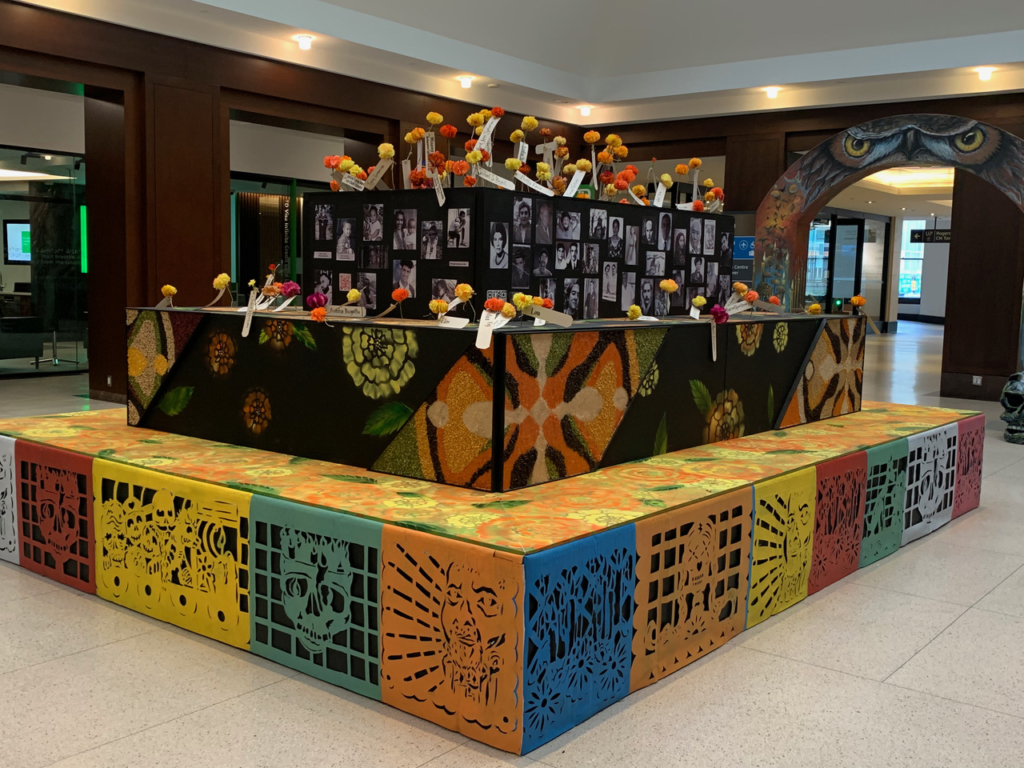
A series of photographs depicting the experiences of those who cope with violence in their communities, ArtworxTO South -
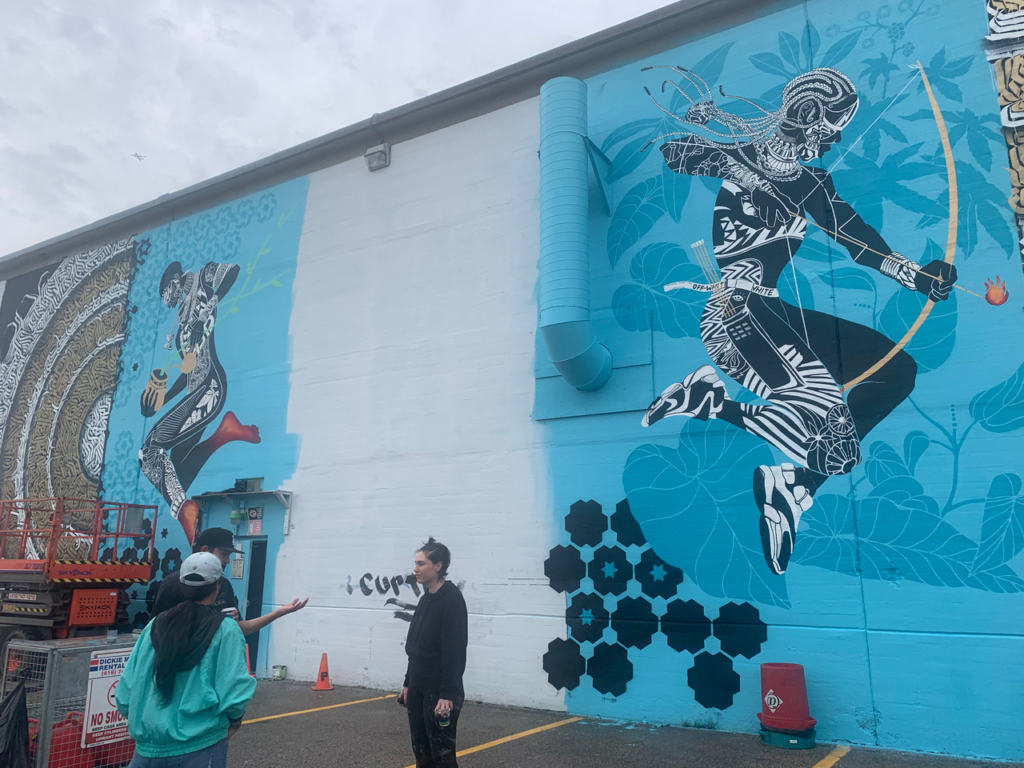
At ArtworxTO North, Danilo Deluxo is overseeing the creation of a 360-ft. long mural with panels by 9 artists -

This new mural in the laneway behind El Mocambo illuminates the legendary music venue -
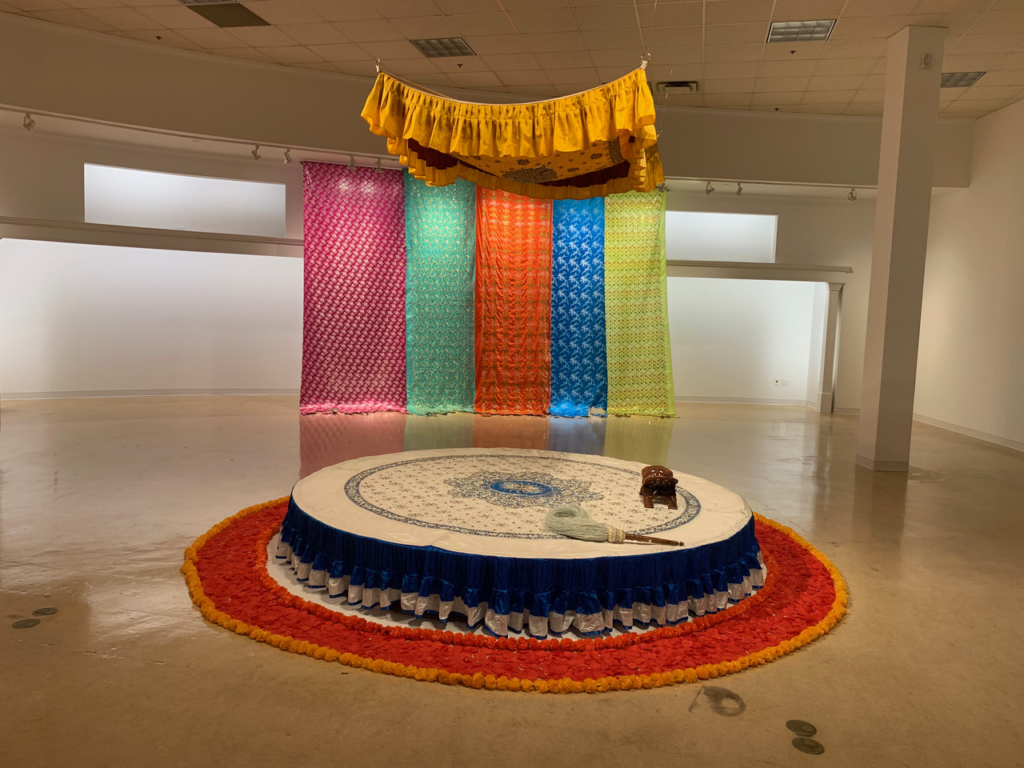
The pop-up exhibit at Bayview Village tells the story of the Punjabi community -
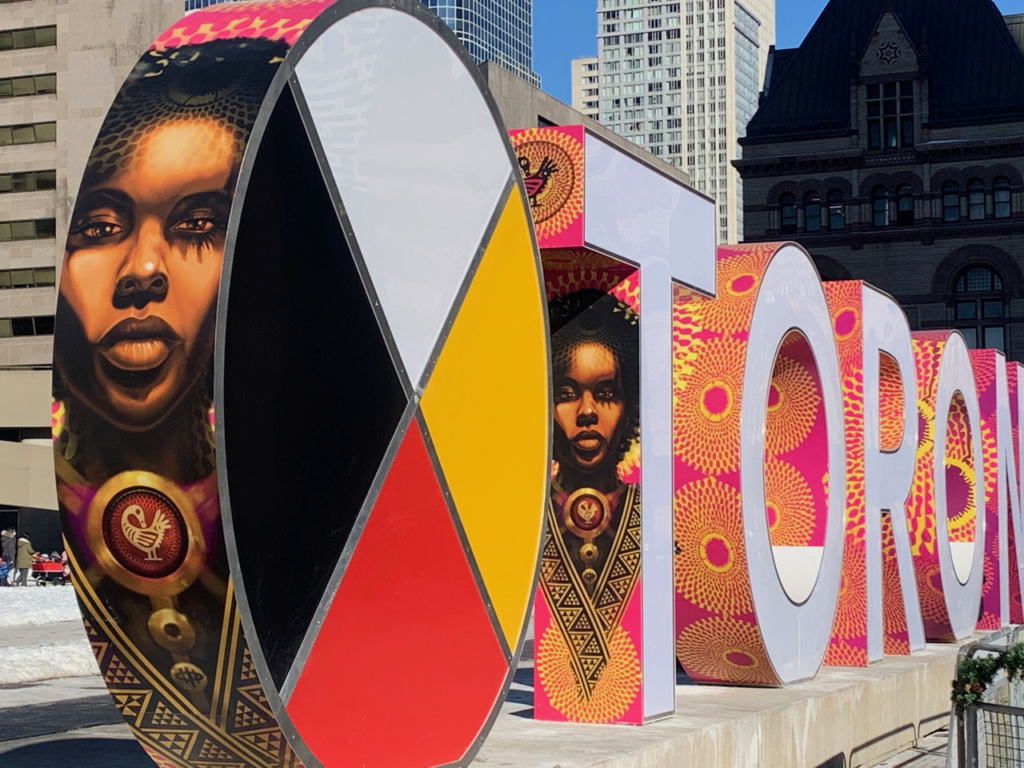
The Toronto Sign features a vinyl wrap with images of African cultural symbols, by Danilo Deluxo
If you’ve explored Toronto with me, you know that I am driven by an insatiable curiosity to understand how Toronto became the city that it is today, and to share my knowledge and passion with visitors, both in-person as well as virtual, throughout the world.
As I explored this amazing collection, I saw that it was much too big for a single itinerary. So, I recently launched a series of six “Art Crawls,” exploring vibrant clusters of public art in different locations throughout the city, including City Place, the Downtown Core, Canary District, Graffiti Alley, Midtown, and others. Each episode will feature artwork from different decades, styles and media, by a wide range of artists.
I invite you to join me for one or all six of these episodes. For complete information, including schedules, please visit https://heygo.com.onthetowntours
A private, live-streamed or in-person “Art Crawl” (either a walking or driving tour) can be arranged for groups of any size. Please reach out to us at: info@onthetown.ca
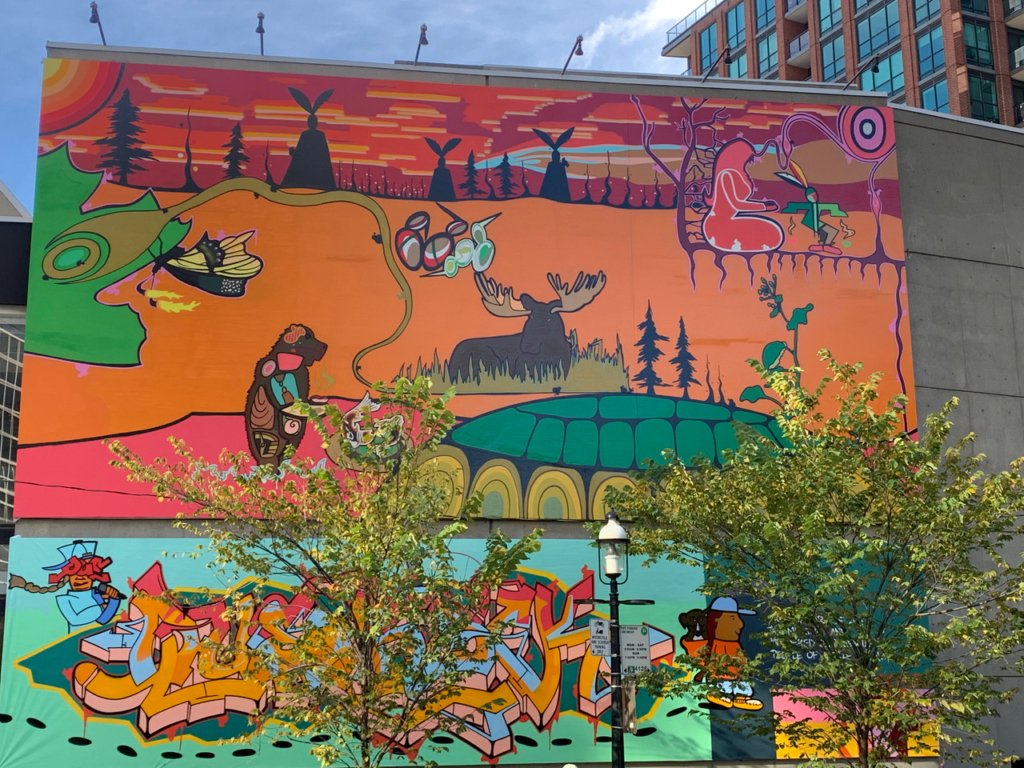
“The Six Nations Peace Treaty,” Que Rock’s vibrant mural on the wall of the St. Lawrence Centre for the Arts. See it at: https://www.heygo.com/tours/art-in-the-city-part-3-downtown-core-and-financial-district
The City is a canvas – and every corner is illuminated.


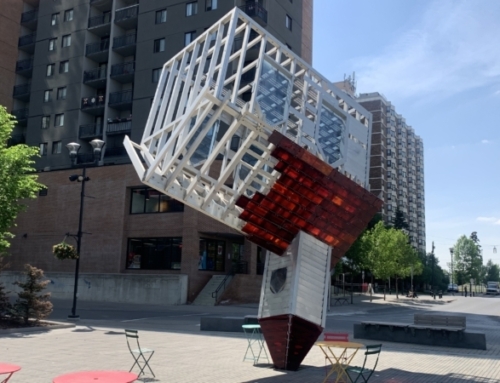
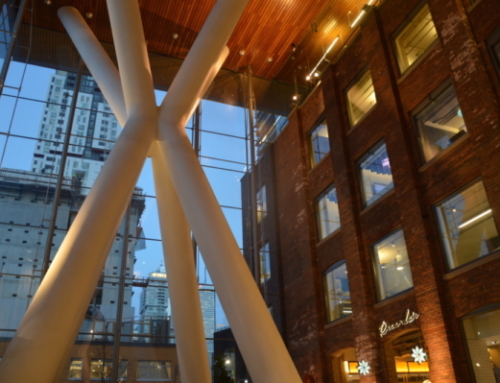
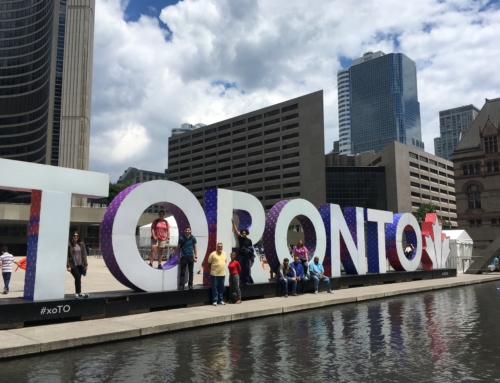
Leave A Comment